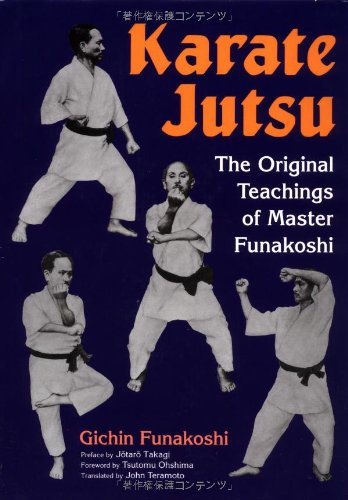Shotokan Karate: What Happened?
 |
| Funakoshi in his younger years. |
- The stances changed dramatically In Funakoshi's first book, or at least first surviving book, KarateJutsu
, he demonstrates several Kata, as well as some basics. His stances are all very high and practical. While he had already begun to shift his Cat Stances in
 |
| Funakoshi demonstrating alternates to reverse punch. |
 |
| Funakoshi demonstrating the product of the University Clubs' influence on what would be known as Shotokan. Compare to KarateJutsu above. |
 |
| Funakoshi says punch these... |
 |
| Not these... |
As someone that grew up with admiration for Shotokan, and grew up learning Shotokan Kata and technique, I was very disappointed when I started reading about Funakoshi and reading the various Shotokan books available. I was disappointed that there was so much missing from my training that was so clearly part of the system only a few years prior. I thought it was insulting to ignore it and act like it isn't a part of the teaching. That was when I decided that I didn't want to study JKA Shotokan any longer. I think they are truly excellent at what they teach, and I admire and applaud their training and instructor training programs. There are also a lot of excellent full contact Shotokan guys. But, for me, it is important to train and study what the Masters taught. So to get closer to Funakoshi, I had to leave Shotokan behind. My aim here is to draw attention to the fact that Funakoshi brought a lot more to Karate than he is often recognized for, and that it is the fault of Tournament Karate for removing so much of Karate's real content and reducing it to punch/block/kick. It saddens me that Shotokan has gone down the very path Funakoshi feared and prophesied as a result of an emphasis on sport fighting. Funakoshi said "When one becomes enthusiastic about sparring, there is a tendency for his Kata to become bad." In other words, he will focus only on techniques useful for sparring and neglect the lessons of Kata, which are not applicable to sparring with each other. And worse yet, that they will begin to think the movements of their Kata are for sparring. Karate is Kata. If your Kata is bad, your Karate is bad. And that is exactly where Funakoshi's Karate has ended up: bad. Training for the ability to be judged in point sparring, or on the beauty of the performance of your Kata as art, is about form over function. The snap of the gi, the volume of the kiai, the pacing of your transitions for dramatic effect, the lowness of stances, big swinging gestures, all serve no purpose other than looking cool. For many years Tae Kwon Do instructors would claim that it was a centuries old Korean art, and that the forms were ancient. Then people started realizing it was just Shotokan Karate with a new back story, and some reworked techniques. Likewise, a lot of Shotokan instructors like to re-imagine Shotokan's history and say things like "those techniques were removed by Funakoshi (sometimes Itosu) to teach school children so they aren't in Shotokan."
 |
| Many argue that Karate lost its "intricate" or "deadly" techniques when they were removed by Funakoshi, |



Excellent article but it seems incongruous with your open letter to Bunkai researchers. Which implies the letter is based on a distorted view of what most Bunkai research does ie hold striking at the core of the art.
ReplyDeleteI am hoping the same best work from you in the future as well. In fact your creative writing abilities has inspired me to start my own Blog Engine blog now. Manicure Provider in Edmonton
ReplyDeleteComprise getting some sort of assize treatise can certainly in fact authenticate as being a intricate errand. When i bigg the way folks proliferate this kind of drive when compared with soft we all getting some sort of organise to find out significant question thesis record parades. Your individual penetrates absolutely are a corporeal places upwards along with! Waxing For Everybody Kennesaw
ReplyDeleteI really enjoyed the quality information you offer to your visitors for this blog..
ReplyDeleteCurcumin Supplement Singapore
It truly is later finding this respond. At the least, it's actually a point out realize we now have this type of characteristics genuinely can be found. marijuana delivery canada
ReplyDelete